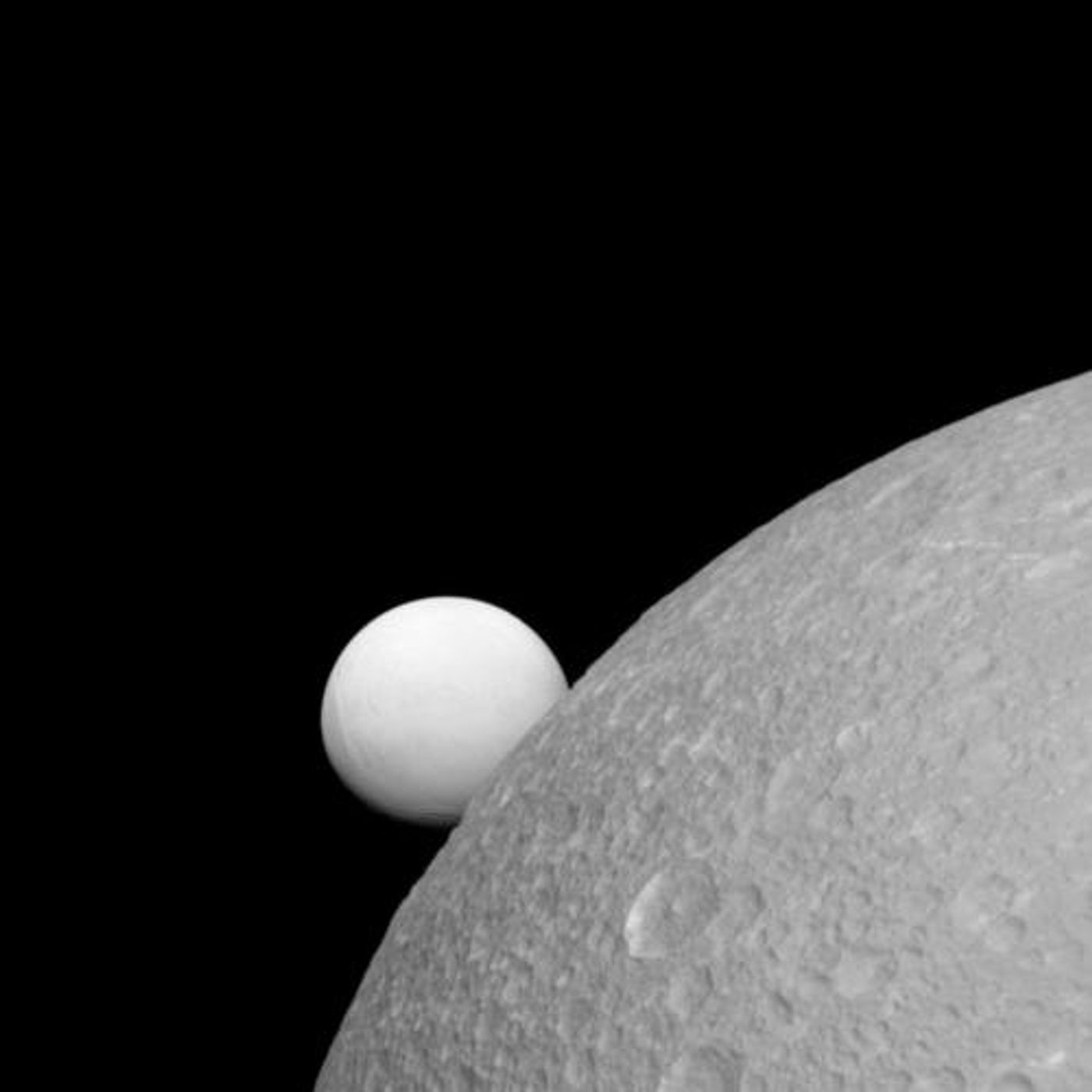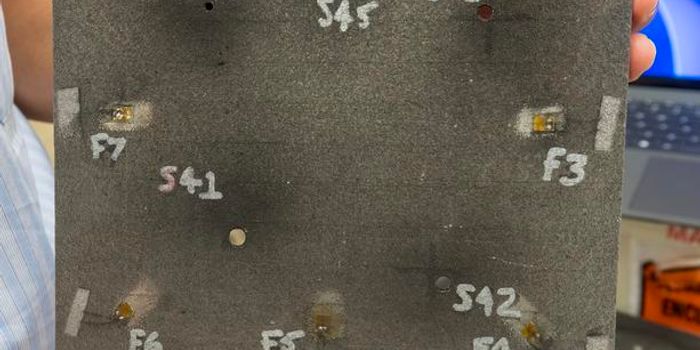Cassini Shows How Much More Reflective Enceladus is Than Dione
Within our solar system in the Saturnian neighborhood, NASA’s Cassini spacecraft is orbiting around and collecting information about Saturn and its surrounding moons in order to learn more about how they were formed and whether or not its possible for any of them to support any signs of life.
As a part of its stay there, it takes a lot of photographs and performs tests with onboard instruments. It is with these photographs that NASA and the ESA can learn more about the past of these rocky space bodies and draw conclusions as to how and why they were formed. A lot of what tells the story of a planet, or a moon, is the composition of its surface.
In a recent picture snapped by Cassini’s narrow-angle camera in invisible light on September 15th, Saturns’ moons Enceladus and Dione are shown in the same frame. What this gives scientists is enough information to deduce that Enceladus, the moon in the background, and Dione, the moon in the foreground, do not have the same amount of reflectivity despite havening similar surface compositions.

The image was taken more than 52,000 miles away from Dione, where each pixel illustrating Dione in the photograph translates to about 1600 feet, and 228,000 miles away from Enceladus, where each pixel illustrating Enceladus in the photograph translates to about 1.4 miles.
Dione has a much bumpier and weathered surface, while Enceladus has a smoother and inactive surface. The result of all the activity on Dione’s surface over the years has kicked up plenty of rocks and debris.
Scientists believe that the reason Enceladus has such a higher amount of reflectivity has to do with the fact that ice jets continue to lay fresh icy particles on the moon’s surface, while Dione has significantly fewer traces of ice. The weathering of Dione’s surface also leaves it with a darker appearance.
Source: NASA








